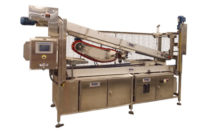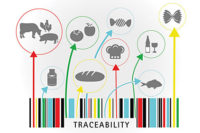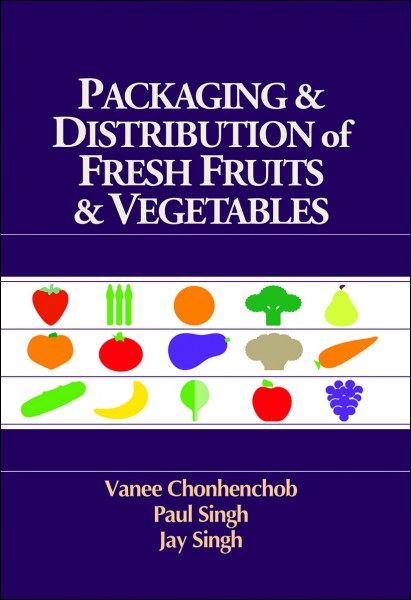The benefits of pan-handling equipment




Whether they specialize in bread, cakes, muffins or other baked goods, most bakers use some type of pan to make their goods. These pans wend their way through the production process with the assistance of assorted pan-handling equipment, such as stackers/unstackers, depanners and loaders/unloaders.
Efficiently and cost-effectively moving baked goods from start to finish without any difficulties is the ultimate goal—one that today’s automated pan-handling equipment can help bakers of all sizes achieve, along with other production benefits.
Colborne Foodbotics, Lake Forest, IL, introduced baked product depanning solutions to the baking industry in the mid-1980s, says Rick Hoskins, director of sales and marketing for the company. By the early ’90s, it had developed a system that allowed users to pick from pans and place product directly into corrugated bulk pack trays. In the early 2000s, it switched to robotics and significantly reduced the footprint of its equipment, more than doubled throughputs, lowered costs and added new features, such as independent pick-and-place tools to maximize uptime and sanitation.
“Our latest depanning systems offer variations in pricing to accommodate almost any operation,” says Hoskins. “The cost generally can be mixed and matched to include the many features we offer, from simple pick-and-place to turnkey, fully-integrated, single-operator control. For those who operate with rolled edge pans, we offer a new system to run shingling-prone pans. We have also recently introduced ‘party platter’ direct transfer of product onto a round pattern tray.”
Hoskins says the company’s pan-handling equipment can address several other issues important to bakers when choosing this type of machinery: production speed, ease of use and changeover speed. Increased production speeds help justify investment in the equipment, he notes, while easy use reduces manpower requirements and increases return on investment. Changeover speed can only be a negative to production speed, he adds. “The longer you take to start back up after a changeover, the more of a hit you have to increasing ROI.”
Colborne Foodbotics addresses sanitation issues through equipment designs that don’t harbor bacteria and contaminants, says Hoskins. Safety systems, meanwhile, notify operators of potential hazards and prevent access to such areas without system shutdowns.
Ken Johnson, president, Gemini Bakery Equipment Co., Philadelphia, says baking industry regulations, with respect to food safety and worker safety, are becoming more stringent.
Equipment that can meet anticipated future needs aids long-term profitability. “Product and operational flexibility to respond quickly to a customer’s changing needs may be a bakery’s ‘competitive edge,’” says Johnson. “A cost-efficient production system in a highly competitive market is a critical concern. Things like prolonged pan life, ease of use and maintenance, changeover speed, high production volumes at manageable machine speeds, and designs for future growth and flexibility are very important concerns with respect to cost-control and cost-efficiency.”
Johnson notes that all of the company’s solutions are custom-designed and tailored to the current and future needs of clients large and small. He says that they’re “ideal for large commercial bakeries ready to grow or that have grown to the next level where greater production demands create a need for reduced labor to maintain an efficient operation, while still maintaining a high degree of product flexibility to serve their customer base.”
But Johnson adds that it’s “equally ideal for small and midsized producers. We can design affordable, expandable, custom solutions that will support our clients through years of growth.”
Transferring baked products from pan to package can be challenging, especially for many small to midsized companies due to their need for flexibility, says Hoskins. “Our experience is that they wait too long and get a new order that will require more people,” he says. “Eventually, we get a call. We can coach them on how to get started, what tooling they should invest in now and what they probably will need in the future.”
Looking for a reprint of this article?
From high-res PDFs to custom plaques, order your copy today!












